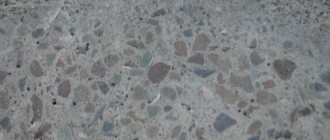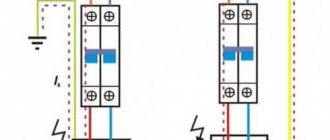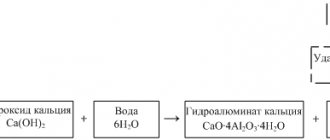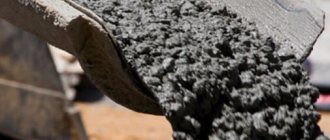Why do you need to know the weight of one cube of brick?
If a person knows how much a cubic meter of a product weighs, he can find out the total load of the walls transmitted to the base. After this, it will be possible to calculate the foundation (its parameters and strength characteristics are determined), as well as other elements of the structure being built.
It is worth noting that when calculating, it is necessary to take into account the mass of the masonry along with the mortar. It is impossible to begin construction surveys, since even hollow bricks have a large mass, so the foundation must correspond to the perceived loads.
More details in the video:
Important! Once the required volume has been determined, it will be possible to calculate the total weight of the ceramic products. This will allow you to clarify the costs of purchase and delivery.
How much does a cube of brick weigh?
What do we want to learn today? How much does 1 cube of broken brick weigh, the weight of 1 m3 of broken brick?
No problem, you can find out the number of kilograms or the number of tons at once, the mass (weight of one cubic meter, weight of one cube, weight of one cubic meter, weight of 1 m3) is indicated in Table 1. If anyone is interested, you can skim the small text below and read some clarifications.
How is the amount of substance, material, liquid or gas we need measured? Except for those cases when it is possible to reduce the calculation of the required quantity to the counting of goods, products, elements in pieces (piece counting), it is easiest for us to determine the required quantity based on volume and weight (mass). In everyday life, the most common unit of volume measurement for us is 1 liter. However, the number of liters suitable for household calculations is not always an applicable way to determine the volume for business activities. In addition, liters in our country have not become a generally accepted “production” and trade unit for measuring volume. One cubic meter, or in its abbreviated version - one cube, turned out to be a fairly convenient and popular unit of volume for practical use. We are accustomed to measuring almost all substances, liquids, materials and even gases in cubic meters. It's really convenient. After all, their costs, prices, rates, consumption rates, tariffs, supply contracts are almost always tied to cubic meters (cubes), and much less often to liters. No less important for practical activities is knowledge of not only the volume, but also the weight (mass) of the substance occupying this volume: in this case we are talking about how much 1 cubic meter weighs (1 cubic meter, 1 cubic meter, 1 m3). Knowing mass and volume gives us a fairly complete idea of quantity. Site visitors, when asking how much 1 cube weighs, often indicate specific units of mass in which they would like to know the answer to the question. As we noticed, most often they want to know the weight of 1 cube (1 cubic meter, 1 cubic meter, 1 m3) in kilograms (kg) or tons (t). Essentially, you need kg/m3 or t/m3. These are closely related units that define quantity. In principle, a fairly simple independent conversion of weight (mass) from tons to kilograms and vice versa is possible: from kilograms to tons. However, as practice has shown, for most site visitors a more convenient option would be to immediately find out how many kilograms 1 cubic (1 m3) of broken brick weighs or how many tons 1 cube (1 m3) of broken brick weighs
, without converting kilograms into tons or vice versa - quantities tons to kilograms per cubic meter (one cubic meter, one cubic meter, one m3).
Therefore, in Table 1 we indicated how much 1 cubic meter (1 cubic meter, 1 cubic meter) weighs in kilograms (kg) and tons (t). Choose the table column that you need yourself. By the way, when we ask how much 1 cubic meter (1 m3) weighs, we mean the number of kilograms or the number of tons. However, from a physical point of view, we are interested in density or specific gravity. The mass of a unit volume or the amount of substance contained in a unit volume is bulk density or specific gravity. In this case, the bulk density and specific gravity of broken bricks.
Density and specific gravity in physics are usually measured not in kg/m3 or tons/m3, but in grams per cubic centimeter: g/cm3. Therefore, in Table 1, specific gravity and density (synonyms) are indicated in grams per cubic centimeter (g/cm3)
Types of material used in construction
The following types of bricks can be used for the construction of buildings:
- ceramic;
- silicate;
- fireproof;
- facing.
The construction of the main load-bearing structures is carried out from silicate or ceramic samples. When facing work, both hollow and solid products can be used. For decoration, volumetric blocks can be laid.
Cladding materials give the building an attractive appearance
Each species has its own characteristics and characteristic differences. The most popular is the classic red brick, which belongs to the ceramic subtype. It is created from baked clay and is highly durable.
To choose the most suitable type, you will need to decide on the tasks. If you plan to build a two- or three-story house, it is recommended to use durable, solid brick. For small, non-residential buildings, it is permissible to use samples of less strength.
What buyers and builders need to consider
According to the requirements of GOST 530–2007, single ceramic bricks are produced only with dimensions of 250x120x65 mm. This material is used if it is necessary to lay out load-bearing walls and a number of other structures. Its severity varies depending on whether hollow or full-weight facing blocks will be laid. Red facing brick, which has no voids, will weigh 3.6 or 3.7 kg. And if there are internal recesses, the mass of 1 block will be a minimum of 2.1 and a maximum of 2.7 kg.
When using one-and-a-half facing bricks that comply with the standard, weight 1 pc. is taken to be 2.7-3.2 kg. Both types of decorative blocks - single and one-and-a-half - can be used to decorate arches and facades. Full-weight products can contain a maximum of 13% voids. But the standards for material containing voids indicate that air-filled cavities can occupy from 20 to 45% of the total volume. Lightening the brick 250x120x65 mm allows you to increase the thermal protection of the structure.
Additional Information
All of the above applies to ceramic facing bricks. But it also has a silicate variety. This material is stronger than an ordinary product and is created by combining quartz sand with lime. The ratio between the two main components is selected by technologists. However, when ordering sand-lime brick 250x120x65 mm, as when purchasing its traditional counterpart, you must carefully calculate the mass of the blocks.
On average, 1 piece of building material with these dimensions weighs up to 4 kg. The exact value is determined by:
- product size;
- the presence of cavities;
- additives used to obtain the silicate block;
- geometry of the finished product.
A single brick (250x120x65 mm) will weigh from 3.5 to 3.7 kg. The so-called one-and-a-half full-bodied (250x120x88 mm) has a mass of 4.9 or 5 kg. Due to special additives and other technological nuances, certain types of silicate can weigh 4.5–5.8 kg. Therefore, it is already quite clear that sand-lime brick is heavier than a ceramic block of similar size. This difference must be taken into account in projects to strengthen the foundation of the buildings being constructed.
Hollow sand-lime brick measuring 250x120x65 mm has a mass of 3.2 kg. This makes it possible to significantly simplify both construction (repair) work and the transportation of ordered blocks. It will be possible to use vehicles with a smaller carrying capacity. In addition, there is no need to strengthen the walls. And therefore, the foundation of the building being erected will be easier to make.
The situation is slightly different with hollow products. This single sand-lime brick weighs 3.2 kg. Standard packaging includes 380 pieces. The total weight of the pack (excluding the substrate) will be 1110 kg. Weight 1 cu. m will be equal to 1640 kg, and this volume itself includes 513 bricks - no more and no less.
Now you can consider one-and-a-half silicate bricks. Its dimensions are 250x120x88, and the weight of 1 brick is the same 3.7 kg. The package will include 280 copies. In total they will weigh 1148 kg. And 1 m3 of sand-and-a-half brick contains 379 blocks, the total weight of which reaches 1400 kg.
There is also crushed silicate 250x120x65 weighing 2.5 kg. In a regular container, 280 copies can be placed. Therefore, the packaging turns out to be very light - only 700 kg exactly. Regardless of the type of bricks, all calculations must be carried out very carefully. Only in this case will it be possible to ensure long-term operation of the building.
If you need to determine the severity of the masonry, you don’t have to calculate its volume in cubic meters. You can simply calculate the mass of one row of bricks. And then a simple principle applies. At a height of 1 m there is:
- 13 rows single;
- 10 strips one and a half;
- 7 strips of double brick.
This ratio is equally true for both silicate and ceramic varieties of material. If you have to clad a large wall, it is better to choose one-and-a-half or even double bricks. It is recommended to start your selection with hollow blocks because they are lighter and more versatile. But if you already have a solid, solid foundation, you can immediately order full-scale cladding products. In any case, the final decision is made only by the customers of construction or repair.
See below for details.
How to make the calculation?
To perform the calculations, you need to know the brand of the product. It reflects how much load the sample can withstand per 1 cm2. Products M100-125 are used for masonry walls, M150-200 for foundations.
In addition to the brand, it is necessary to clarify the mass of a cubic meter or an individual sample taken. This will allow you to determine the required bearing capacity of the foundation.
After all the characteristics become known, it is necessary to select the desired formula. If problems arise with the calculation, you should seek help from qualified specialists. It is worth remembering that mistakes can lead to serious problems, because the foundation must be built with a margin of safety.
Weight of 1 m3 of sand-lime brick
Such masonry material is usually purchased in cubic meters. Knowing the weight of such a quantity of brick is, of course, very useful. In this case, you can quickly determine the cost of the material needed for laying the walls.
1 m3 of sand-lime brick includes:
- single - 513 pcs. (512.8);
- one and a half - 378 pcs.
Thus, it is easy to calculate the weight of a cubic meter of such material in its original packaging:
- for a hollow single - 3.2 x 513 = 1641.6 kg;
- full-bodied single - 3.6 x 513 = 1846.8 kg;
- one and a half hollow - 4 x 378 = 1512 kg;
- one and a half full-bodied - 4.8 x 378 = 1814.4 kg.
Weight characteristics of materials
Each product has specific parameters that you need to familiarize yourself with before purchasing. The final mass of a ceramic product is affected by its porosity and density. The denser the more weight. Density also directly affects strength.
Ordinary bricks
By ordinary we mean products made from clay that has been fired. The indicators are determined by the dimensions and composition of the sample. Solid, red brick of standard size 250x120x65mm. weighs about 3.5-4 kg., hollow has a mass of 2.5-3 kg. Decorative options made from clay weigh less. A cubic meter of standard samples with a mass of about 4 kg weighs 1800 kg. These figures are indicative, so you need to make your own calculations after determining the parameters of an individual product.
Type and dimensions of solid products
The classic type is sold by many construction companies. Its advantage is its availability, widespread use, and high performance characteristics.
Sand-lime brick
The silicate look is created from quartz sand and lime. The product is autoclaved, which allows us to obtain high-quality samples. Among the advantages of this building material are:
- environmental friendliness;
- frost resistance;
- strength;
- availability.
If silicate products are not painted, then they have a gray color (the ceramic analogue always turns out red). There are both painted and unpainted options.
The mass of solid building material is approximately 3.7 kg, hollow - 3.2 kg. Based on these values, a cubic meter without solution will weigh approximately 1750 kg. It is worth noting that the solution gives the masonry additional weight, but at the same time reduces the number of samples in one cubic meter. When selecting materials, be sure to take this nuance into account.
Cement mortar
Cement mortar is usually used to connect the elements. Mortar joints also affect the specific gravity of a cubic meter of masonry. The seam size varies from 1 to 1.5 cm. The weight of the masonry will vary from 1500 to 1900 kg.
For construction, it is important to use high-quality mixtures. After drying, the seam can be given an aesthetic appearance by jointing. It is especially important to create a neat seam if cladding is not planned in the future. Most often, ready-made cement-lime mixtures are purchased.
Weight of bricks in 1m3 of finished structure
Accordingly, the remaining 0.7 m3 remains the share of masonry materials, i.e. brick.
The weight of an ordinary solid ceramic brick measuring 250x120x65 cm is about 4 kg. Its volume is 0.0019 m3, so it is not difficult to calculate that in 0.7 m3 of the erected structure there are approximately 369 bricks. If each of them weighs approximately 4 kg, we can find out that the mass of all in one cubic meter of the finished product is 1476 kg. By adding the mass of bricks and mortar, we get the result:
1 m3 of finished brickwork weighs approximately 1976 kg.
Brick is usually called a wall material that is obtained by firing different types of raw materials. For ceramics, these are certain types of clay, and for silicate products, sand, lime and water. Each of the considered types of wall products has its own characteristics, which means their weight per unit volume (in our case, a cubic meter) will not be the same.
The weight of each individual brick will depend not only on the raw material composition, this indicator is also influenced by production technology (firing temperature, presence of voids, etc.). It should be noted that each wall material has its own tolerances for individual characteristics, including weight.
Table values of masonry weight
To save time, you can use a ready-made table that indicates the average values of a certain type of masonry. For calculations it is permissible to use the following table:
| Material type | Cube weight in kg |
| Single ceramic solid | 1700-1800 |
| Single ceramic hollow | 1300-1400 |
| Single silicate solid | 1800 |
| Single silicate hollow | 1700 |
The masonry must be carried out in accordance with the technology.
On average, the masonry weighs from 1700 to 1900 kg. In rare cases, the figure exceeds 2000 kg. It is required to calculate the foundation and load-bearing walls taking into account these indicators. When building a foundation, you need to take into account the region and soil in which the construction will take place.
Important! The more complex the construction is planned, the more accurate the calculation justification must be made. A one-story house can be erected without complex manipulations. For high-rise buildings, detailed calculations are required to create an appropriate foundation.
Weight of 1 m3 of ceramic bricks
Such material is also in most cases purchased in cubic meters. The packaging - one 1 m3 of ceramic bricks includes:
- single - 511 pcs.;
- double - 255 pcs.;
- one and a half - 377 pcs.
The weight of 1 m3 of ceramic bricks in original packaging will be, respectively:
- single full-bodied - 1689.6-1843.2 kg;
- single hollow - 1177.6-1280 kg;
- single facing - 675.84-819.2 kg;
- one and a half full-bodied - 1508-1621.1 kg;
- one and a half hollow - 1131-1244.1 kg;
- one and a half facing - 1017.9-1206.4 kg;
- double full-bodied - 1683-1836 kg;
- double hollow - 1173-1275 kg.
Foundation design
The foundation is calculated based on the total load and soil characteristics. All elements of the future construction are taken into account, among which are:
- walls;
- roofing;
- floors;
- Decoration Materials.
Once the approximate total mass of the building has been calculated, you can proceed to study the construction site. Before construction, you need to determine the type of soil, as well as the depth of its freezing (depending on the region). Based on the characteristics of the soil, select the appropriate type of foundation that will withstand the planned load.
The load must be evenly distributed over the entire base
For proper planning, absolutely all the nuances must be taken into account. The foundation must be constructed in compliance with technology.
Counting Features
When calculating the required amount of material, a person may encounter many difficulties. If you learn in advance about the features of this procedure, you will be able to make the calculation faster and with better quality. For everything to go right, you need to consider the following parameters:
- in winter, the structure will be additionally loaded with snow;
- the brand of the product affects its strength characteristics (in multi-story construction, it is necessary to use bricks with high load-bearing capacity).
Snow load in different regions
To prevent the building from deforming from excessive load or subsidence of the foundation, it is necessary to use material with a safety margin.
All building products should be purchased from trusted suppliers. If the brick is not produced in compliance with the technology, it will not meet the declared characteristics.
Important! If the construction will be long-term, then you should think in advance about how the object will be preserved. To ensure that an unfinished house does not suffer from adverse external influences, its individual elements must be protected.
How much does a cube of brick weigh?
What do we want to learn today? How much does 1 cube of brickwork weigh, what is the weight of 1 m3 of brickwork?
No problem, you can find out the number of kilograms or the number of tons at once, the mass (weight of one cubic meter, weight of one cube, weight of one cubic meter, weight of 1 m3) is indicated in Table 1. If anyone is interested, you can skim the small text below and read some clarifications.
How is the amount of substance, material, liquid or gas we need measured? Except for those cases when it is possible to reduce the calculation of the required quantity to the counting of goods, products, elements in pieces (piece counting), it is easiest for us to determine the required quantity based on volume and weight (mass). In everyday life, the most common unit of volume measurement for us is 1 liter. However, the number of liters suitable for household calculations is not always an applicable way to determine the volume for business activities. In addition, liters in our country have not become a generally accepted “production” and trade unit for measuring volume. One cubic meter, or in its abbreviated version - one cube, turned out to be a fairly convenient and popular unit of volume for practical use. We are accustomed to measuring almost all substances, liquids, materials and even gases in cubic meters. It's really convenient. After all, their costs, prices, rates, consumption rates, tariffs, supply contracts are almost always tied to cubic meters (cubes), and much less often to liters. No less important for practical activities is knowledge of not only the volume, but also the weight (mass) of the substance occupying this volume: in this case we are talking about how much 1 cubic meter weighs (1 cubic meter, 1 cubic meter, 1 m3). Knowing mass and volume gives us a fairly complete idea of quantity. Site visitors, when asking how much 1 cube weighs, often indicate specific units of mass in which they would like to know the answer to the question. As we noticed, most often they want to know the weight of 1 cube (1 cubic meter, 1 cubic meter, 1 m3) in kilograms (kg) or tons (t). Essentially, you need kg/m3 or t/m3. These are closely related units that define quantity. In principle, a fairly simple independent conversion of weight (mass) from tons to kilograms and vice versa is possible: from kilograms to tons. However, as practice has shown, for most site visitors a more convenient option would be to immediately find out how many kilograms 1 cubic (1 m3) of brickwork weighs or how many tons 1 cubic (1 m3) of brickwork weighs
, without converting kilograms into tons or vice versa - quantities tons to kilograms per cubic meter (one cubic meter, one cubic meter, one m3).
Therefore, in Table 1 we indicated how much 1 cubic meter (1 cubic meter, 1 cubic meter) weighs in kilograms (kg) and tons (t). Choose the table column that you need yourself. By the way, when we ask how much 1 cubic meter (1 m3) weighs, we mean mass - the number of kilograms or the number of tons. However, from a physical point of view, we are interested in density or specific gravity. The mass of a unit volume or the amount of substance contained in a unit volume is bulk density or specific gravity. In this case, the bulk density and specific gravity of the brickwork.
Density and specific gravity in physics are usually measured not in kg/m3 or tons/m3, but in grams per cubic centimeter: g/cm3. Therefore, in Table 1, specific gravity and density (synonyms) are indicated in grams per cubic centimeter (g/cm3)
Table 1. How much does 1 cube of brickwork weigh, the weight of 1 m3 of brickwork. Bulk density of a brick wall and specific gravity in g/cm3. How many kilograms are in a cube of a brick wall, tons in 1 cubic meter, kg in 1 cubic meter of a brick wall, tons in 1 m3. Additionally, how much: 1 liter weighs, 1 bucket weighs, liters in one cube of a brick wall.
The volumetric density of brickwork and the specific gravity of a brick wall, as well as the number of kilograms in 1 liter (weight in a volume equal to a liter jar), the number of kilograms in 1 bucket (weight in a volume equal to a standard bucket with a capacity of 10 liters)
are given in Table 1 as additional useful practical information.











